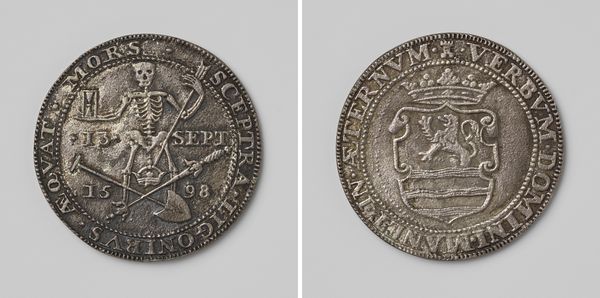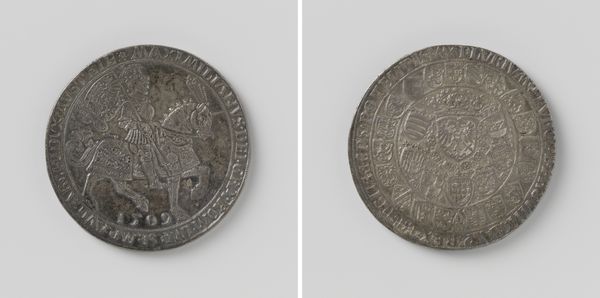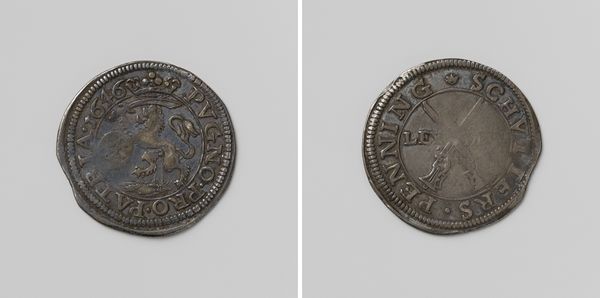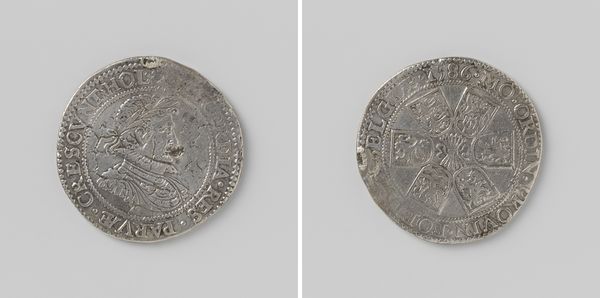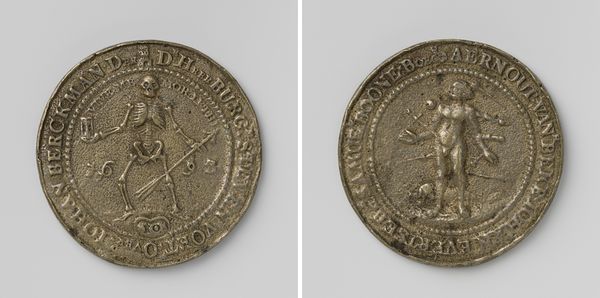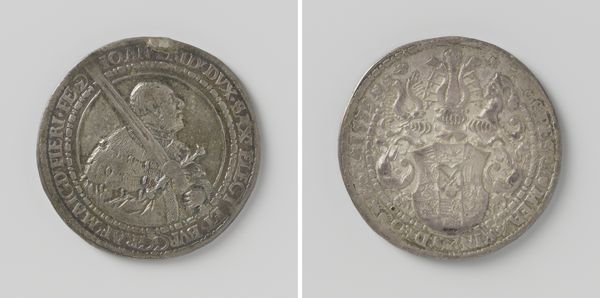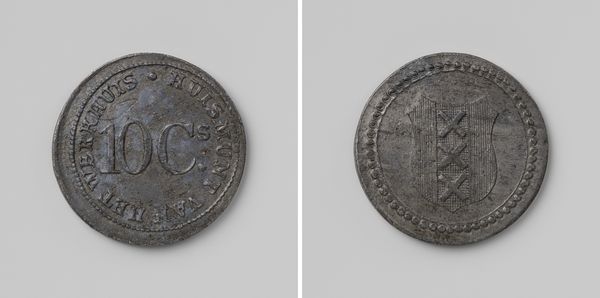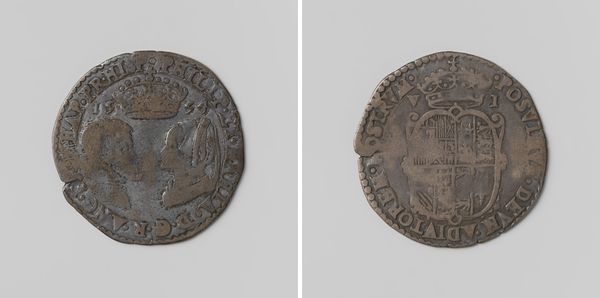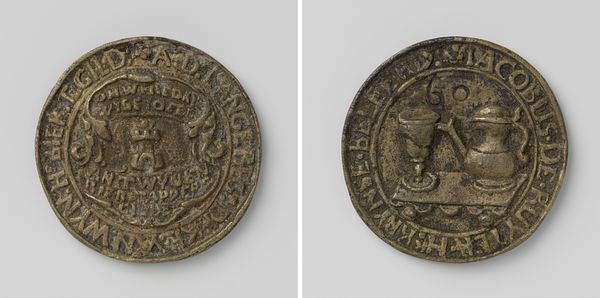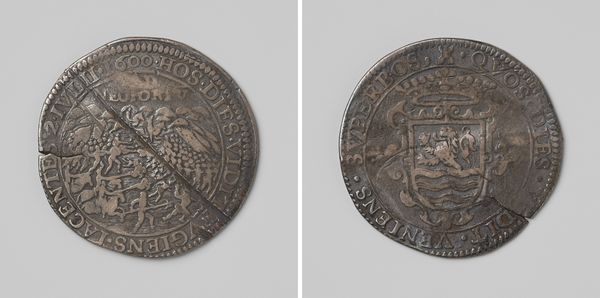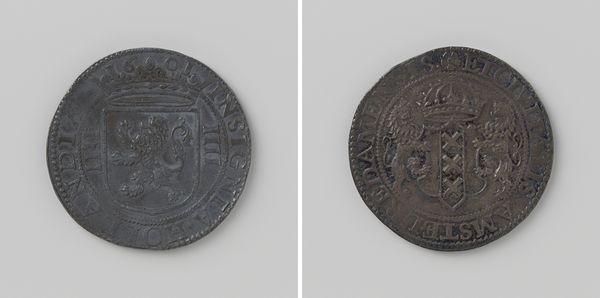
Jan van Leiden, aanvoerder der wederdopers en de overgave van Munster 1536
0:00
0:00
anonymous
Rijksmuseum
metal, relief, sculpture
#
portrait
#
metal
#
sculpture
#
detailed texture
#
relief
#
sculptural image
#
11_renaissance
#
sculpture
Dimensions: diameter 4.1 cm, weight 19.72 gr
Copyright: Rijks Museum: Open Domain
Curator: The metallic relief we're observing is entitled "Jan van Leiden, aanvoerder der wederdopers en de overgave van Munster," dating back to 1536. What are your initial thoughts? Editor: It's striking how rigid and contained everything feels, especially given the subject matter. The cool, gray metallic tone amplifies this sense of controlled chaos. There is detail that softens its texture. Curator: Indeed. It’s crucial to consider the sociopolitical backdrop: Jan van Leiden was a key figure in the Anabaptist movement, claiming to be king of New Jerusalem in Münster. The city's surrender in 1535 marked a brutal end to their radical experiment. So it's more about control than it is about anarchy. Editor: I can appreciate how the circular composition then echoes this. The detailed inscriptions frame the central figures—Leiden on one side, and symbols of Münster on the other—almost trapping them within the confines of history and judgment. What about the symbolism on the side opposite from Leiden, could you tell us more? Curator: Of course, on the flipside you can see the cross and the crown of thorns, accompanied by some armory that signifies royal power and governance of Leiden. This symbolizes triumph and also the failure of what happened at Munster. It seems almost mocking in retrospect. Editor: Mocking? That's quite a loaded reading. Curator: Perhaps. But art often serves specific agendas, especially in commemorating contentious historical moments. And given that the Anabaptist movement was crushed so decisively, such representation feels heavy with propaganda. This could be a demonstration of political authority and power. Editor: That brings a totally new perspective to how art shapes the cultural landscape in how it affects history. Considering how it can change political viewpoints in the viewer by changing perspective and telling a more controlled, thought-out, narrative, what the artist wanted us to know. Curator: And it allows us to reflect critically not only on history itself but on how it is memorialized.
Comments
No comments
Be the first to comment and join the conversation on the ultimate creative platform.
